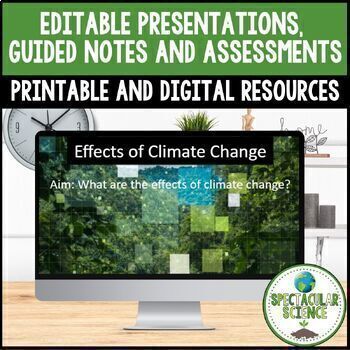Toward A Sustainable Future Unit Bundle
- Zip
Products in this Bundle (12)
showing 1-5 of 12 products
Bonus
Also included in
- Environmental Science is a laboratory course that is designed to help students understand the complex nature of our environment and make responsible decisions regarding its protection and use. Students will be introduced to problems of land use, human population, environmental health, and sustainabiPrice $400.00Original Price $484.00Save $84.00
Description
Elevate your science curriculum to new heights with this Toward A Sustainable Future Unit Bundle—an invaluable resource crafted for educators at every stage of their teaching journey. Aligned with the Next Generation Science Standards (NGSS), this comprehensive bundle is designed to breathe life into your lessons, offering a collection of creative and engaging plans that will inspire both students and educators alike.
Dive into essential concepts that address the critical need for sustainability in our world. This bundle provides a thought-provoking framework for fostering a deep understanding of the importance of sustainable practices.
Why Choose This Bundle:
✅ 20% savings on this comprehensive bundle!
✅ Growing bundle—receive new resources added for free!
✅ Aligned with NGSS for a seamless fit into your science lesson plans
✅ Engaging activities, assignments, and presentations to enhance student learning
✅ Bonus resources, including additional versions of the Sources and Uses of Energy Unit Exam and Unit Pacing Guide
Equip your classroom with this dynamic resource to empower students to contribute to a more sustainable future.
✎ WHAT'S INCLUDED?
- Introduction to Sustainability Unit
- Climate Change Unit
- Sources and Uses of Energy Unit
- Hidden Energy Costs Project
- Alternative Energy Solutions Project
- Global Warming Earth Day Assignment
- Environmental Stewardship Project
- Holiday Light Pollution Activity
- Waste Reduction During the Holidays Activity
- The Impact of Christmas Trees Activity
- Sustainable Holiday Decorations Activity
- Holiday Energy Efficiency Activity
⭐ BONUS RESOURCES!
- Additional versions of the Sources and Uses of Energy Unit Exam
- Unit Pacing Guide
⚠️ BUNDLE & SAVE!⚠️ Get even more savings when you buy my YEARLONG Environmental Science Curriculum! Click here to check it out!
Related Resources:
⭐ Looking for quality resources and time-saving tips for your secondary science classroom?
☑ Follow Spectacular Science on TPT
☑ Subscribe to My Newsletter
☑ Check Out My Blog
☑ Follow Me on Instagram






